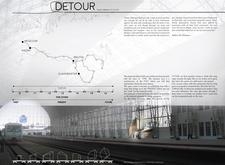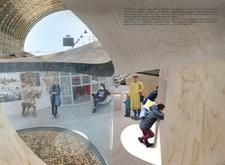5 key facts about this project
## Project Overview
The architectural design project focuses on developing stations along the Trans-Siberian Railway, specifically in Moscow, Kazan, Irkutsk, and Ulaanbaatar. By intertwining themes of historical significance and local cultural context, the project aims to create stations that not only serve as transit points but also as community hubs that engage travelers with the rich narratives of each city along the railway.
## Spatial Framework
Each station is designed to function as both a transit facility and a cultural venue, providing space for exhibitions, local crafts, and community gatherings. In Moscow, the station features a dramatic entrance and ascending pathways that highlight the journey's historical context while offering practical amenities. Kazan’s station adopts a sculptural form to harmonize with its surroundings, prioritizing accessibility and minimizing disruption to the historical landscape. Irkutsk’s station emphasizes community interaction with dedicated spaces for local artists and crafts, fostering a connection between the local culture and the station’s users. Ulaanbaatar's design incorporates striking geometric forms, creating multifunctional spaces that blend informational and leisure activities while enhancing the user's experience through natural lighting.
## Materiality and Sustainability
The material selection throughout the project reflects a commitment to modern aesthetics and environmental responsibility. Exteriors utilize scratch aluminum plates for durability, while structural integrity is supported by a metal frame. Interior spaces are enriched with warm wood finishes, and insulation is provided by recycled denim batts, underscoring a focus on sustainability. Plywood applications offer versatility in interior design, and large areas of structural glass facilitate abundant natural light. Each material choice aligns with the project's goal of creating engaging and inviting environments while promoting longevity and environmental stewardship.






















































